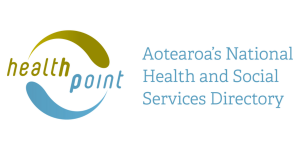Cyclizine
Sounds like 'sye-kli-zeen'
Key points about cyclizine
- Cyclizine is used for nausea (feeling sick) or vomiting (being sick), caused by motion sickness, vertigo or Meniere's disease.
- Cyclizine is also called Nausicalm®.
- Find out how to take it safely and possible side effects.
Cyclizine is used for nausea (feeling sick) or vomiting (being sick), caused by motion sickness, vertigo or Meniere's disease. It can also be used to treat nausea and vomiting caused by other medications.
It works by blocking certain chemicals (histamines) in your brain that cause nausea and vomiting. Cyclizine is also called Nausicalm®.
Cyclizine is available as an injection or as tablets (50 mg).
In Aotearoa New Zealand, cyclizine tablets can be bought from a pharmacy without a prescription, after consultation with a pharmacist (pharmacist-only medicine).
- The usual dose of cyclizine for adults is 1 tablet (50 mg) up to 3 times a day.
- When it's used for motion sickness, it should be taken at least 1 to 2 hours before departing. If you're going on a long journey, you can then take further doses every 8 hours if needed.
- Water: Take cyclizine with a glass of water.
- Food: You can take it with or without food.
- Missed dose: It's not harmful if you miss a dose of cyclizine. If you forget your dose, take it as soon as you remember. But if it's nearly time for your next dose, just take the next dose at the right time. Don't take double the dose.
- Are you pregnant or breastfeeding?
- Do you have problems with your liver or kidneys?
- Do you have heart failure?
- Do you have any problems with your bowels that can cause blockages (Crohn’s disease, diverticulitis, hernias or colon cancer)?
- Do you have any blood disorders such as porphyria?
- Do you have glaucoma (increased pressure in your eye)?
- Do you have epilepsy?
- Do you have problems passing urine or prostate problems?
- Are taking any other medicines? This includes any medicines you're taking which you can buy without a prescription, as well as herbal and complementary medicines.
If so, it’s important that you tell your healthcare provider or pharmacist before you start cyclizine. Sometimes a medicine isn’t suitable for a person with certain conditions, or it can only be used with extra care.
Here are some things to know when you're taking cyclizine. Other things may be important as well, so ask your healthcare provider what you should know about.
- Alcohol: Limit drinking alcohol while you’re taking cyclizine. Alcohol can increase the risk of side effects such as drowsiness.
- Driving: Be careful when driving or using tools until you know how this medicine affects you.
- Other medicines: Cyclizine interacts with some medicines, herbal supplements and rongoā Māori, so check with your healthcare provider before starting cyclizine and before starting any new products.
- Sun: Cyclizine can make your skin more sensitive to the sun, even on a cloudy day. This can cause a burning, tingling feeling on your skin when you are in the sun, or you may notice redness. When you're outside, protect your skin and eyes by using a good sunscreen (at least SPF30+) and wearing sunglasses, a sunhat and clothing that protects you from the sun. Don't use sunbeds.
- Pregnancy or breastfeeding: Talk to your healthcare provider if you're pregnant, planning a pregnancy or want to breastfeed.
Like all medicines, cyclizine can cause side effects, although not everyone gets them. If you're concerned about any symptoms you think might be related to your medicine, talk to your healthcare provider. The following information offers some guidance but doesn't include all possible side effects.
Common side effects
Tell your healthcare provider if these side effects bother you.
- Feeling drowsy, dizzy or confused: Be careful when driving or using tools until you know how this medicine affects you. These effects put you at risk of falls, and injuries especially if you’re an older adult. Don’t drink alcohol.
- Dry mouth: Try sucking on ice chips, or lollies or drink small sips of water. Read more about dry mouth.
- Constipation: Eat a high fibre diet which includes a lot of fruit, vegetables, brown bread and bran-based breakfast cereals. Drink plenty of water. Read more about constipation.
Tell your healthcare provider immediately or phone Healthline free on 0800 611 116 if these occur
- Blurred vision or fast heart rate.
- Problems passing urine (peeing).
Phone 111 for an ambulance or go to your nearest accident and emergency (A&E) clinic if these occur
- Signs of an allergic reaction such as itchy skin, and rash, swollen lips or tongue, problems breathing, like a tight chest or shortness of breath.
Read more about medicines and side effects and reporting a reaction you think might be a side effect.
The following links have more information on cyclizine. Be aware that websites from other countries may contain information that differs from New Zealand recommendations.
Cyclizine(external link) New Zealand Formulary Patient Information
Cyclizine(external link) Patient Info, UK
Brochures
Medicines and side effects(external link) Healthify He Puna Waiora, NZ, 2024
5 questions to ask about your medications(external link) Health Quality and Safety Commission, NZ, 2019 English(external link), te reo Māori(external link)
References
- Cyclizine(external link) New Zealand Formulary
- Nausicalm(external link) Medsafe datasheet, NZ, 2024
- Anticholinergic burden in older people(external link) BPAC, NZ, 2024
Brochures
Medicines and side effects
Healthify He Puna Waiora, NZ, 2024
Health Quality and Safety Commission, NZ, 2019 English, te reo Māori
Credits: Healthify editorial team. Healthify is brought to you by Health Navigator Charitable Trust.
Reviewed by: Stephanie Yee, Pharmacist, Auckland.
Last reviewed:


